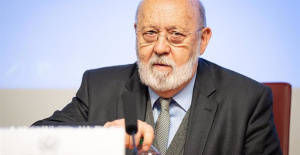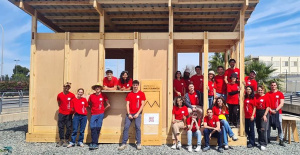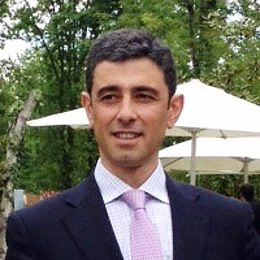After the attack, he managed to delay the arrival of the ambulance thanks to the fact that he simulated a call to 062
MADRID, 14 Feb. (EUROPA PRESS) -
The Supreme Court (TS) has confirmed the sentence to 13 years and 9 months in prison for a woman who cut her husband's wrist while he was sleeping with the intention of making him bleed to death, and who later pretended to her son that he had already died. called the ambulance to prevent the emergency services from arriving in time to save his life.
In a Supreme Court ruling, collected by Europa Press, the Criminal Chamber thus endorses the resolution of the Provincial Court of Malaga in 2021 that convicted her of the crimes of mistreatment in the family and attempted murder with kinship aggravation . The court recalls that with his stratagem he managed to get the ambulance to arrive 45 minutes late.
The woman's defense alleged before the High Court that during the proceedings her fundamental right to the presumption of innocence had been violated, and that article 139 of the Penal Code had been improperly applied because she had not acted treacherously.
According to the Supreme Court ruling, on the night of November 26, 2019 at 11:00 p.m., the couple had an argument that ended with the woman hitting the husband with a briefcase, which caused him to hit his head on the nightstand.
After recovering from the daze, he cleaned his wounds and went to rest in the next room, where he lay down and fell asleep. At dawn, the woman entered the room where she was sleeping and "immediately and without any possibility that she could react, she severed her left wrist with an unidentified sharp instrument."
The man began to scream when he saw the cut and she applied a cloth to the wound and simulated a call to 062 – a call that she hung up two seconds after making it. After this, 15 minutes later and in the presence of her son, who came down from the attic alerted by the man's screams, she made another call to the Emergency Department and hinted that her husband was going through a depression and that the cut was not it was important.
If the attack occurred before 4:59 a.m., thanks to the delays achieved by the woman, the ambulance did not arrive until 5:45 a.m., and the husband suffered a cardiorespiratory arrest on the way to the hospital.
In the surgical exploration of the wound that was carried out at the Malaga Hospital, it was seen that it presented "a section of the ulnar artery, the flexor tendon of the fingers and the median nerve", injuries that were sutured.
Now, responding to the appeal of the woman's defense, the Supreme Court indicates that there was no violation of her right to the presumption of innocence and explains that already in a first appeal before the Superior Court of Justice of Andalusia (TSJA) they gave her a full response , and warns that the appeal before the Supreme Court cannot be "a clone" of what was defended in previous instances because that way "the appeal system is deformed."
Following this warning, the Chamber reviews the evidence in the case one by one, including testimonies and forensic reports, and points out that after listing up to 17 points taken into account by the TSJ, these "allow for the requirement of the appointment of the relevant data to be able to enervate the presumption of innocence and allow the inference of the court that the facts occur as reflected in those proven".
It points out that in this specific case the indications "are multiple and of conclusive importance and relevance" and, therefore, allow us to determine that it was the woman "the one who tried to end the life of the victim, and that she did not give time to the emergency services. emergencies and health workers to mobilize aid".
Regarding the woman's thesis that it has not been proven that the attack occurred in a situation of helplessness of the victim that prevented an effective defense, the Supreme Court picks up the argument of the TSJ to recall that the husband, after being attacked by his wife He went to the next room with a briefcase and went to bed, falling asleep, a situation that the author took advantage of, in the middle of the night, to attack him with a sharp object, without giving him the chance to defend himself.
"His intention to intentionally cause her death was reinforced by his subsequent action since, at 4:59 a.m., he pretended that he was calling 911, and he really did not," he adds. And he concludes that in this case, the TSJ already pointed out that he was facing "an assumption of treachery by preemption, given the situation of helplessness in which the victim found himself."
In addition, after analyzing all the types of treachery included in the Spanish legal system, the Supreme Court confirms that in this case "there has been an evident defenselessness in the victim, as is clear from the proven facts, which allowed the crime to be confirmed."
"For all of the above in this case there was treachery, since there was a treasonous attack, a surprise attack, an attack taking advantage of the fact that the victim was asleep and, therefore, helplessly, and an attack taking advantage of the so-called coexistence trust," he concludes, adding that was unexpected and unpredictable for the victim.

 Exploring Cardano: Inner Workings and Advantages of this Cryptocurrency
Exploring Cardano: Inner Workings and Advantages of this Cryptocurrency Seville.- Economy.- Innova.- STSA inaugurates its new painting and sealing hangar in San Pablo, for 18 million
Seville.- Economy.- Innova.- STSA inaugurates its new painting and sealing hangar in San Pablo, for 18 million Innova.- More than 300 volunteers join the Andalucía Compromiso Digital network in one month to facilitate access to ICT
Innova.- More than 300 volunteers join the Andalucía Compromiso Digital network in one month to facilitate access to ICT Innova.-AMP.- Ayesa acquires 51% of Sadiel, which will create new technological engineering products and expand markets
Innova.-AMP.- Ayesa acquires 51% of Sadiel, which will create new technological engineering products and expand markets Marc Márquez returns to pole in Jerez
Marc Márquez returns to pole in Jerez The CIS carries out a quick survey on Sánchez's letter to measure the reaction of citizens
The CIS carries out a quick survey on Sánchez's letter to measure the reaction of citizens 12M.- Puigdemont to Sánchez and Illa: "This is not about the future of the PSOE! What have you believed?"
12M.- Puigdemont to Sánchez and Illa: "This is not about the future of the PSOE! What have you believed?" Díaz proclaims that "the Government is not going to bow down" and asks not to be "on the defensive and locked in" against the right
Díaz proclaims that "the Government is not going to bow down" and asks not to be "on the defensive and locked in" against the right How Blockchain in being used to shape the future
How Blockchain in being used to shape the future Not just BTC and ETH: Here Are Some More Interesting Coins Worth Focusing on
Not just BTC and ETH: Here Are Some More Interesting Coins Worth Focusing on UPV students build a prototype of a wooden house to move to Equatorial Guinea
UPV students build a prototype of a wooden house to move to Equatorial Guinea The UA opens the call for the Impulso 2024 Awards for the best innovative business initiatives
The UA opens the call for the Impulso 2024 Awards for the best innovative business initiatives ALI, virtual assistant from Alicante, internationally recognized by the OECD
ALI, virtual assistant from Alicante, internationally recognized by the OECD Retrópolis brings the golden age of video games and computing to the UPV
Retrópolis brings the golden age of video games and computing to the UPV A million people demonstrate in France against Macron's pension reform
A million people demonstrate in France against Macron's pension reform Russia launches several missiles against "critical infrastructure" in the city of Zaporizhia
Russia launches several missiles against "critical infrastructure" in the city of Zaporizhia A "procession" remembers the dead of the Calabria shipwreck as bodies continue to wash up on the shore
A "procession" remembers the dead of the Calabria shipwreck as bodies continue to wash up on the shore Prison sentences handed down for three prominent Hong Kong pro-democracy activists
Prison sentences handed down for three prominent Hong Kong pro-democracy activists ETH continues to leave trading platforms, Ethereum balance on exchanges lowest in 3 years
ETH continues to leave trading platforms, Ethereum balance on exchanges lowest in 3 years Investors invest $450 million in Consensys, Ethereum incubator now valued at $7 billion
Investors invest $450 million in Consensys, Ethereum incubator now valued at $7 billion Alchemy Integrates Ethereum L2 Product Starknet to Enhance Web3 Scalability at a Price 100x Lower Than L1 Fees
Alchemy Integrates Ethereum L2 Product Starknet to Enhance Web3 Scalability at a Price 100x Lower Than L1 Fees Mining Report: Bitcoin's Electricity Consumption Declines by 25% in Q1 2022
Mining Report: Bitcoin's Electricity Consumption Declines by 25% in Q1 2022 Oil-to-Bitcoin Mining Firm Crusoe Energy Systems Raised $505 Million
Oil-to-Bitcoin Mining Firm Crusoe Energy Systems Raised $505 Million Microbt reveals the latest Bitcoin mining rigs -- Machines produce up to 126 TH/s with custom 5nm chip design
Microbt reveals the latest Bitcoin mining rigs -- Machines produce up to 126 TH/s with custom 5nm chip design Bitcoin's Mining Difficulty Hits a Lifetime High, With More Than 90% of BTC Supply Issued
Bitcoin's Mining Difficulty Hits a Lifetime High, With More Than 90% of BTC Supply Issued The Biggest Movers are Near, EOS, and RUNE during Friday's Selloff
The Biggest Movers are Near, EOS, and RUNE during Friday's Selloff Global Markets Spooked by a Hawkish Fed and Covid, Stocks and Crypto Gain After Musk Buys Twitter
Global Markets Spooked by a Hawkish Fed and Covid, Stocks and Crypto Gain After Musk Buys Twitter Bitso to offset carbon emissions from the Trading Platform's ERC20, ETH, and BTC Transactions
Bitso to offset carbon emissions from the Trading Platform's ERC20, ETH, and BTC Transactions Draftkings Announces 2022 College Hoops NFT Selection for March Madness
Draftkings Announces 2022 College Hoops NFT Selection for March Madness























